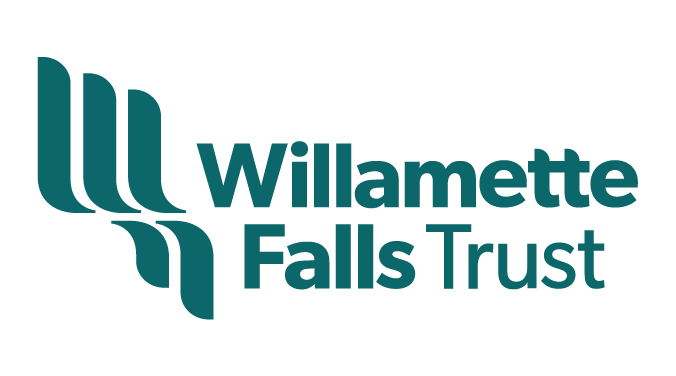Let’s read together: Coyote Was Going There: Indian Literature of the Oregon Country.
Spring and summer are times for gathering first foods, for harvesting fish from the river and Falls. Winter is for storytelling. But if, like us, you’re spending a lot more time at home during this season, we encourage you to learn with us about Coyote and his relationship to local communities. When the time comes and we’ve constructed the public riverwalk together, we hope you’ll join us in coming to the Falls to hear its stories firsthand.
This week we’re reading Coyote Was Going There: Indian Literature of the Oregon Country compiled and edited by Jarold Ramsey. It’s a remarkable anthology of stunning Indigenous mythology from the region’s tribes, originally transcribed and translated by scholars such as Archie Phinney, Melville Jacobs, and Franz Boas. On a sunny morning in early March, we had the honor of meeting Ramsey in person and enjoying a conversation about the book.
Sitting around his dining room table, we took in the expansive view of the Oregon plateau and the Warm Springs canyon lands stretching beyond their family farmstead. Ramsey shared about experiences working as an anthropologist with members of the regional tribal communities while gathering material for his breakout book, now in its fifth printing.
This book, the first of several compilations, has a chapter focusing on the Willamette River and Willamette Falls features several times within received indigenous stories as well as his contextual narratives. In the chapter entitled The Willamette Valley: Kalapuya groups, Molala, Clackamas Chinook, he writes:
The Indians who occupied the Willamette Valley at the turn of the nineteenth century were living at the bullseye of the historical target that was ‘Oregon.’ For the strategic country around the...Willamette River constituted the promised land at the end of the Oregon Trail….and as a consequence the Indians who lived here were the first in the Northwest to be so displaced from their native grounds by settlers bent on farming.
It should be pointed out that by the time [the settlers] arrived in the valley in numbers, a series of epidemics...had already ravaged the valley tribes and left large areas essentially unpopulated - an instance of disease serving as one of history’s shock troops.
We invite you to join us this week as we reflect on these Falls-specific Chinookan stories. The piece that stands out starkly is his mention of the devastating impact of epidemics on the tribes — echoed today in how COVID-19 is disproportionately affecting Indigenous communities in places like the Navajo Nation.
As we sit with this book and the many wonderful stories, we are also brought back to the fact that this land we call home is the site of systematic displacement and dispossession, bearing a legacy of both unheard and untold stories. Our hope is that Willamette Falls will be one of many steps towards ending this legacy and providing a place to tell the many, rich, full stories that brought Oregon into existence and where there can be healing.
We invite you to purchase Coyote Was Going There: Indian Literature of the Oregon Country through the Tamastsklit Cultural Institute at the Umatilla Reservation.
We hope you and your loved ones continue to stay healthy as we stay home and stay safe.

